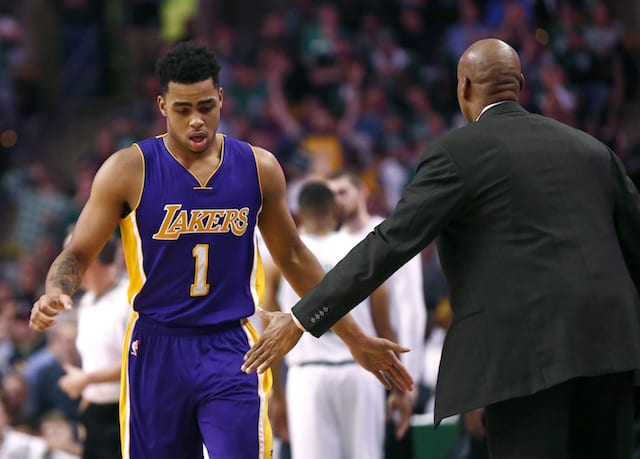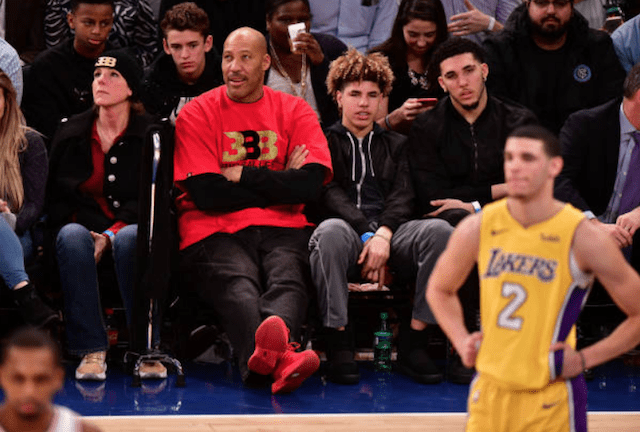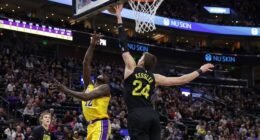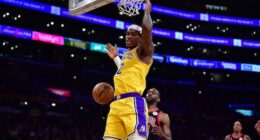Care to guess the last time the Lakers drafted someone in the first round of the NBA Draft? If you guessed anywhere between 2008 and 2012 you’re wrong. It was 2007. If I asked you when was the last time the Lakers drafted someone in the first round who played out his entire rookie season with the team, you’d have to go back to Jordan Farmar in 2006.
The Lakers took Javaris Crittenton with the 19th pick in the 2007 Draft and then included him, along with their 2008 and 2010 first-rounders, in the package sent to Memphis for Pau Gasol. In the years since, they’ve made it to the NBA Finals three times, winning twice. The 2008 pick, the 28th overall, ended up in Sacramento and was used on Donte Greene who is still a free agent. The 2010 pick was used on Greivis Vazquez, who spent one season in Memphis before he was traded to New Orleans for Quincy Pondexter. The 2011 pick, which ended up 27th, was traded to the Nets along with Sasha Vujacic to trim payroll. The Nets used the pick on JaJuan Johnson who was traded the same day to the Celtics for MarShon Brooks. Just last week, Johnson was part of the package the Celtics traded to Houston for Courtney Lee.
It has to make you wonder if Mitch Kupchak knows something that a lot of other GMs haven’t figure out yet. That first-round picks, specifically those between pick 20 and 30, are overrated. In fact, they might be worth a lot more as trade currency than as draft currency. Even in the deepest of drafts, once you get past about pick 17, the risk of drafting a quality player between 18 and 60 is pretty much the same.
But there’s a pretty big difference between first and second round picks as far as money is concerned. First round picks are guaranteed two years with team options for a third and fourth year. Second round picks are not only subject to the NBA minimum with almost nothing guaranteed, but they’re also not included in team salary. That explains why Kupchak has traded first round picks for second round picks numerous times — as a loophole with which to trim payroll. This is why it’s widely believed that the first pick of the second round is more valuable than the last pick of the first round.
You could make the case that Kupchak has fared much better in the second round than he has in the first round, anyway. In fact, Andrew Bynum and Toney Douglas are the only first round picks Kupchak has made that are currently on NBA rosters and Bynum was a lottery pick while Douglas was drafted and sold to the Knicks in 2009. Farmar will be playing in Turkey next season while Vujacic, who played in Turkey last season, is currently a free agent. Brian Cook is unlikely to get another NBA contract.
By comparison, second rounders like Luke Walton, Ronny Turiaf, and Von Wafer have had careers that far exceeded those of most second round picks.
Kupchak’s history with trading first-round picks made it a little surprising when he acquired an additional first-round pick from Dallas in the Lamar Odom trade — a pick that’s top-20 protected until 2017. But it was of little surprise to anybody when Kupchak traded that Mavs pick at the deadline for Jordan Hill to trim next season’s payroll. The only shocking part was Kupchak including Derek Fisher with the pick.
In similar and typical Kupchak-ian fashion, he used the Lakers pick to dump Luke Walton’s salary on the Cavaliers while also acquiring Ramon Sessions. The Cavs later traded the pick to the Mavs, who used it on Jared Cunningham while the Cavs used the Mavs pick to draft Tyler Zeller.
Since the NBA doesn’t allow teams to trade back-to-back first-round picks, the Lakers instead gave the Cavs the right to trade the Miami Heat pick the Cavs own in next year’s draft with the Lakers pick. Since the Heat are expected to finish with one of the league’s top-3 records, the pick should end up either 28th, 29th, or 30th. After another unimpressive second-round playoff exit, it didn’t seem far-fetched to think the Lakers might decline enough next season for their pick end up as high as 19.

Then something great happened. Ramon Sessions opted out and the Lakers traded their pick in next year’s draft, which will either be their pick or Miami’s pick (the worse of the two), to the Suns for Steve Nash. Suddenly that Lakers pick that could have been as high as 19 is a candidate to finish somewhere between 25 and 30.
In addition to the pick in next year’s draft, they also gave the Suns two second-round picks and another first-round pick in 2015. The first of the two second round picks is Denver’s pick in next year’s draft and it’s top-40 protected. The other second round pick is in 2014. So Kupchak practically gave up three second round picks and one first round pick for Nash. The first rounder, the one in 2015, is the only one with the potential to be worth anything and the only way that happens is if the Lakers completely fall apart between now and then. These were the picks Orlando was crying about when they said they couldn’t trade Dwight directly to the Lakers because they’d already traded all of their assets for Nash? Picks that have been used on the likes of Donte Greene, Greivis Vazquez, JaJuan Johnson, and Jared Cunningham. Really?
Even more impressive is how Kupchak used three picks, all of which will likely be in the mid-to-late 20s, to dump about as much salary in Walton, Fisher, and Sessions as the Lakers will be paying Nash, Hill, and Antawn Jamison next season.
Kupchak has made such a habit of trading guys either on expiring contracts or with one year left that the practice should be named after him. In the last seven years he did it with Jumaine Jones and Kareem Rush for future Bobcats second rounders, with Brian Cook and Mo Evans in the Trevor Ariza trade, with Vlad Radmanovic in the trade for Adam Morrison and Shannon Brown, and in the last two seasons in dumping Vujacic, Fisher, and Walton.







